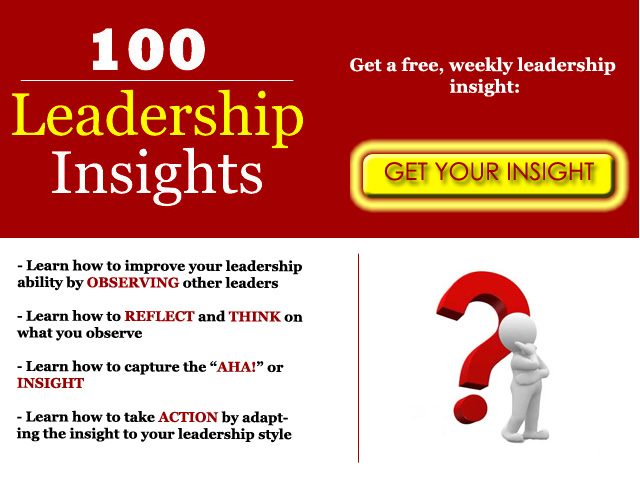Leaders Think Integration

Organizational Environment
Today, large organizations are extremely complex and busier than ever. Because of their size, they face greater challenges, such as increasing competition and an increasingly global environment to operate in. To consistently produce outstanding results, organizations must overcome the challenge of figuring out how to capitalize on the full talent, skill, and ability of its workforce.
Fast-paced and dynamic, these environments breed problems that must be solved quickly and comprehensively – the first time. There is no time to go back and fix mistakes or to recover from applying the right solution to the wrong problem. Organizations pay thousands of dollars to have management consultants diagnose problems and propose solutions. The fact remains that the solutions do not reside with the consultants, the solutions are floating around in the heads of the organizations’ workforce. How can an organization use the combined power of its workforces’ talents, skills, abilities, and resources to produce an optimum result every time?
The people in an organization represent the greatest storehouse of knowledge, ideas, and solutions that will ever be found. The challenge for most organizations is that they do not know how to tap this reservoir of knowledge or to use it to their best advantage. This resource not only exists within most organizations, it is readily available to the leader who knows how to access it.
Leadership Makes a Difference
A leader is concerned with synchronizing resources, people, information and systems – the only way he can do this is to think integration – now and always. Integration speaks to the multiplier effect of problem-solving – the more perspectives brought to bear on a particular problem, the more robust, comprehensive and well-rounded the solution will be because of the collaborative effort, experience, and knowledge of the functional experts involved in the process
A leader is like the conductor of an orchestra who synchronizes the efforts of his musicians to produce a breathtaking sound. In an organization, its similar – the leader is concerned with how all of the parts of the organization combine to produce fantastic results. The leader is thinking about how to increase efficiency by asking questions like, can he combine efforts between two or more people or organizations to produce a greater result? How are the efforts of her business unit helping meet the objectives of the larger organization? The leader may also ask, who else needs to know about what I’m doing? Who else needs to be involved in this process or project? Leaders bring people together to accomplish the mission and to improve outcomes and results.
How does a leader synchronize the efforts of everyone in an organization, so that they all are going in the same direction, focused on getting optimum results for the organization? The leader must figure out how to decisively bring all of the organizations’ capability to bear on a problem in order to produce a comprehensive solution.
Integration
Organizations consist of different functions, units, and sections all focused on helping it to meet its objectives. Typically, these units are working to solve problems independently, which may result in one-sided or stove-pipe results or solutions. These organizational units should work together to accomplish the mission; however, egos, competitiveness, incompetence and other human characteristics combine to interfere with its efficiency and effectiveness.
Integration is concerned with obtaining the best outcomes by gathering the input of multiple stakeholders in the process. Integration speaks to an understanding of the power of combining efforts to produce a greater result – you can work alone or you can work together with others, whichever you like; however, by working with others you will be more successful than working alone and you achieve better results. Going at it alone produces a solution; however, approaching it as an integrated team provides a more dynamic and robust solution to the problem because you are capitalizing on the multiple perspectives, insights, and ideas of a team.
How would an organization use this insight on integration to its advantage? The first step of integration emphasizes the need to get stakeholders involved in the process as early as possible – early involvement matters. The second step of integration is focused on acknowledging the needs and desires of all stakeholders – ensuring they know that their opinions matter and will be considered in deliberations. The third step of integration requires that an organization seek to bring people to the table – talking, discussing, and delving deep into key issues or concerns… and ensuring that everyone is heard.
Leaders must think integration in order to capitalize on the resources, capabilities, and strengths of each unit to allow its use by the organization as a whole.
The benefits of integration include:
- Saves time;
- Capitalizes on the experiences and insights of others;
- Promotes creativity and collaboration;
- Reduces costs.
 Vernon Myers is the author of the upcoming book, The Idea Journal: A Tool for Unleashing Your Urge to Create! Click here to get a FREE copy of the amazing 6 Traits of Highly Creative People Video and to find out more about the upcoming launch.
Vernon Myers is the author of the upcoming book, The Idea Journal: A Tool for Unleashing Your Urge to Create! Click here to get a FREE copy of the amazing 6 Traits of Highly Creative People Video and to find out more about the upcoming launch.
Vernon is also a contributing author in the bestselling book, 101 Great Ways to Improve Your Life, volume 3.
Do you want to learn if you have what it takes to be an innovative person? Click here







Recent Comments